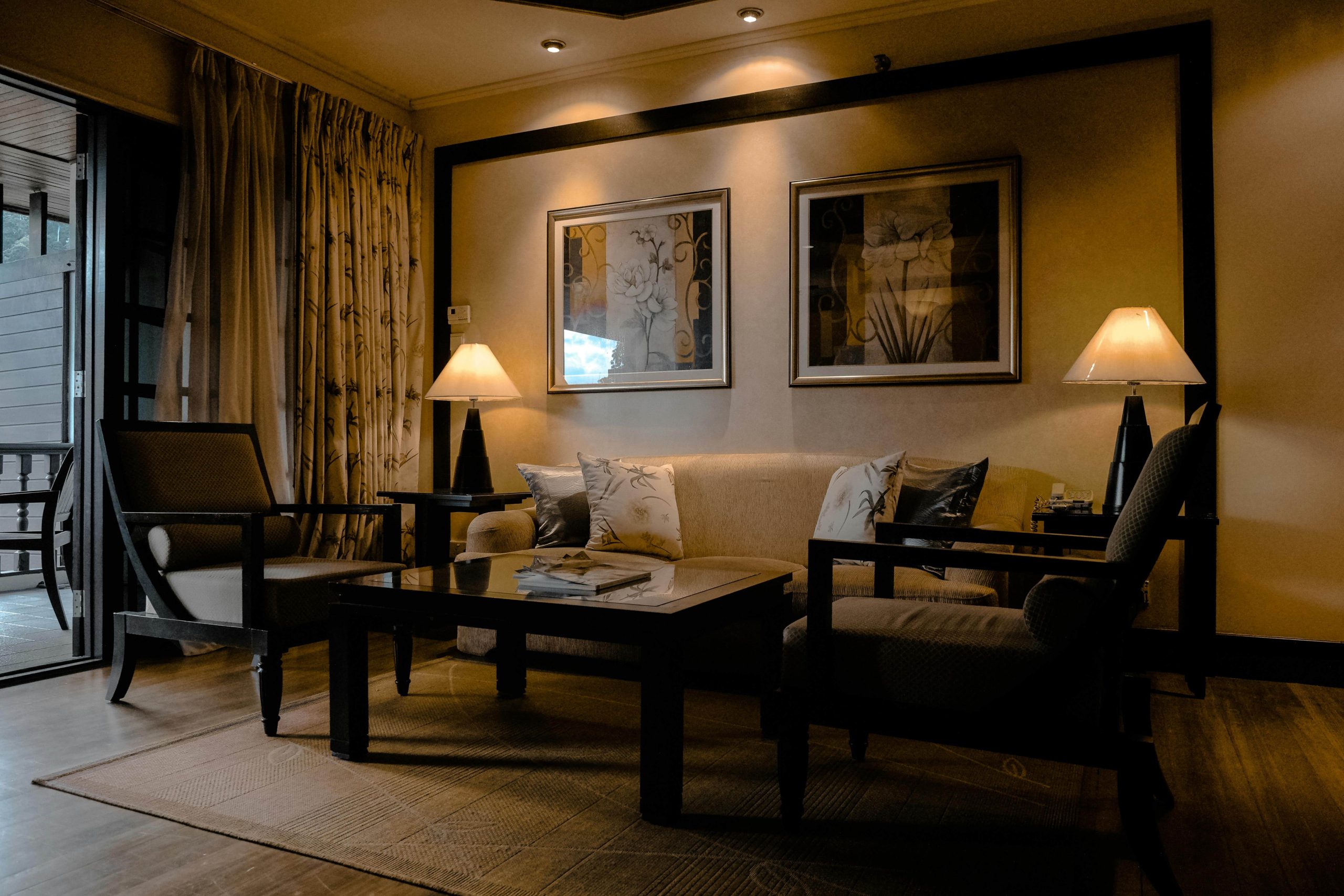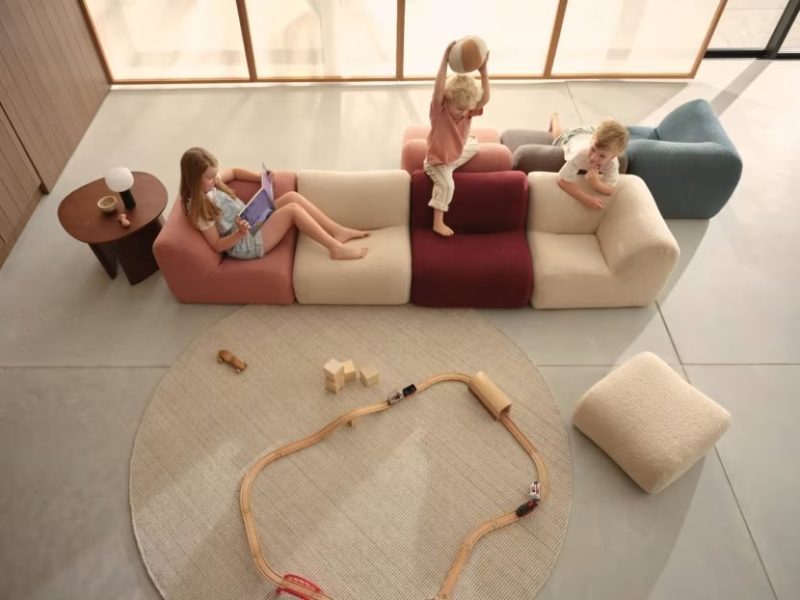As the year 2025 approaches, the luxury furniture market is set to unveil innovations that blend state-of-the-art technology with timeless elegance, reshaping how we perceive and utilize our living spaces. This article delves deeper into the upcoming trends that will captivate design aficionados worldwide, highlighting the craftsmanship, materials, and conceptual advancements in luxury furniture design.
1. Art Deco Influence Reimagined
The year 2025 will witness a significant resurgence of Art Deco influences, with furniture pieces adopting bold geometric patterns, rich colors, and extravagant detailing reminiscent of the roaring twenties. This modern reinterpretation will focus on sustainable luxury, utilizing eco-friendly materials like bamboo and recycled metals to recreate the opulence of the past.
2. Innovative Material Integration
Luxury furniture designers are set to revolutionize the industry by incorporating unusual, high-tech materials into traditional designs. Expect to see pieces that feature smart surfaces capable of charging devices wirelessly, incorporating OLED displays, and utilizing nano-materials for enhanced durability and sustainability.
3. Sculptural Functionalism
In 2025, furniture will not just serve a functional purpose but will also act as standalone pieces of sculpture. Designers will merge artistic expression with utility, crafting pieces that transform spaces into dynamic environments. These sculptural furniture pieces will be characterized by their fluid forms and unexpected material combinations, providing both comfort and aesthetic intrigue.
4. Dynamic Modular Systems
Responding to the increasing demand for flexible living arrangements, modular furniture systems will become more sophisticated. These systems will offer effortless adaptability and customization, allowing users to reconfigure their setups according to their immediate needs, without compromising on style or comfort.
5. Heritage Craftsmanship with a Modern Twist
The appreciation for artisanal techniques will continue to grow, with a renewed focus on handcrafted furniture that tells a story. However, in 2025, these traditional techniques will be infused with modern technology, bringing precision to craftsmanship that was previously only achievable by hand. This blend of old and new will honor artisan histories while embracing modern efficiencies.
6. Ergonomic Luxury
As health and wellness continue to be a priority, luxury furniture design will increasingly focus on ergonomics. Designers will create pieces that support optimal body posture and movement, marrying luxury with comfort and health. These designs will feature adjustable components, tailored to the user’s body, enhancing both the functionality and luxury of personal and workspace environments.
7. Interactive Furniture
Interactive furniture will become mainstream in luxury interiors, with pieces designed to respond to user behavior and environment changes. This furniture will include sensors and AI capabilities to adjust lighting, sound, and even scent based on the time of day or mood of the room, offering a fully immersive and customizable environment.
8. Global Design Language
2025 will also see a stronger influence of global design trends in luxury furniture. Artisans and designers will draw inspiration from cultures around the world, bringing a diverse range of aesthetics to the forefront. This global approach will cater to an increasingly international clientele, looking for pieces that reflect global consciousness.
9. Luxury Outdoor Living
With more people appreciating outdoor living spaces, luxury outdoor furniture will see new heights in design. Weatherproof materials combined with elegant designs will make outdoor areas just as luxurious as indoor spaces. High-end outdoor kitchens, dining areas, and lounging furniture will be designed to create a seamless flow between indoors and outdoors.
10. Personalized Experience
Finally, personalization will play a critical role in luxury furniture. Consumers will have unprecedented options to customize pieces not just in terms of color or fabric, but also size, function, and even technological integration, making each piece distinctly suited to individual preferences and lifestyles.
Conclusion
As we look toward 2025, the luxury furniture industry is poised to redefine not just how we view furniture, but how we interact with it in our daily lives. This industry is increasingly becoming a frontier for innovation, where design meets technology, sustainability, and art in ways that challenge the very essence of what furniture can offer.
In this context, luxury furniture is not merely about aesthetic appeal and high-end materials. It is increasingly about creating pieces that enhance the quality of life, support sustainability, and embrace technological advancements. The furniture of tomorrow will likely be smarter, more flexible, and more environmentally friendly than ever before, reflecting broader societal shifts towards sustainability and technology.
For design aficionados, these changes herald a new era of choices. The future promises furniture that can adapt to different spaces and needs with unprecedented ease. Whether it is through pieces that transform with a touch, adjust to our moods, or sustain us ergonomically, luxury furniture will continue to be at the forefront of both design innovation and everyday convenience.
Moreover, the continued globalization of the design market introduces a new layer of cultural richness to furniture designs. With influences from every corner of the world, luxury furniture in 2025 will be a tapestry of global aesthetics, offering designs that are as culturally rich as they are luxurious. This diversity will not only enhance the visual appeal of these pieces but also bring deeper cultural narratives into the spaces we inhabit.
Lastly, the journey of purchasing luxury furniture is itself transforming. The traditional model of selecting and buying furniture is evolving into a more personalized experience. Consumers expect not just quality and luxury, but also a narrative—a story behind each piece that resonates with their personal journey. This shift towards personalized storytelling in design not only enriches the buyer’s experience but also cements the role of furniture as a pivotal element in the personal branding of one’s living space.
As we advance, it becomes clear that the luxury furniture industry is not just keeping pace with global trends but is actively shaping them. The future of this industry is vibrant and dynamic, promising a synthesis of form, function, and sustainability that will continue to inspire and revolutionize our living environments. The anticipation for what 2025 holds is palpable, and for those who appreciate the finer aspects of design, the future cannot come soon enough.







